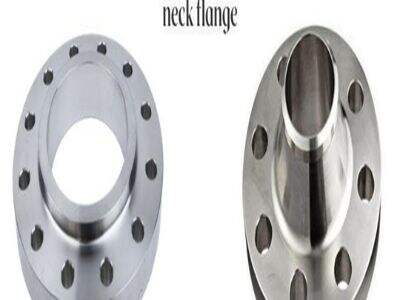When assembling pipe for stainless steel, it’s also important to be aware of various flange faces. The main types are: RF, FF, and RTJ. All of the above flange faces have their own properties which are suited for different kind of applications. And so, in this blog post, we’ll explore in more detail the two types of washers, and the differences between them, and how to pick the appropriate one and size for your next stainless steel pipework system.
RF, FF and RTJ flange face: defining the difference between them:
RF, FF and RTJ are three types of flange faces commonly used in piping systems. RF=raised face; FF=flat face; RTJ=ring type joint. RF-type flanges feature a raised sealing surface to serve as a sealing surface when compressed against another flange. FF flanges are flat faced and simple to line up and install. The RTJ flanges feature a groove to keep the ring gasket secure and sealed.
Selecting the proper flange face type for stainless steel applications:
Choice of flange face type for stainless steel application The selection of flange face type in an application mostly depends on the factors including temperature, weight and the type of fluid, handling it. RF flanges are ideal for high pressure and high temperature applications, delivering a tighter seal than ring type or flat face flanges. FF Flanges FF flanges are commonly used in low pressure and low temperature applications where fast alignment is required. RTJ flanges are suitable for resilient flow transfer lines that need fast and tight closure.
Understanding the Advantages and Disadvantages of RF, FF, and RTJ Flange Face Types:
RF flanges are used for the tightest seal, but are more expensive and require more careful alignment during installation. FF flanges are easy to fit, however, it does not seal vacuum as tight as an RF flange. RTJ flanges are dependable and leak-free, but they can be challenging to install and require special gaskets.
Things to consider when choosing the type of flange face required on stainless steel piping systems :
There are special little flange face type to select while configuring flange face type selection for stainless steel pipe systems and it should be decided based on the services of application. The type of flange face, according to the application, will have to be flat, raised face or ring joint. Price and ease of installation should be taken into account, as well.
A detailed overview of RF, FF and RTJ flange face types for stainless steel applications:
To conclude RF, FF, and RTJ are three popular flange face types for stainless steel pipe systems. Every type comes with its own pros and cons and unique features. When you are deciding the type of flange face to use, you will want to take into consideration the amount of pressure, temperature, and the type of fluid that you are dealing with. Once you know the dissimilarities in between the RF, FF, and RTJ flanges, you can choose a flange face type that’s best for your intended application. And of course, it’s important to work with a pro to ensure you select and install the right flanges for your stainless steel piping system!
In summary, it is important to know the distinctions of RF, FF, RTJ types of flange for the purpose of choosing the flange type for stainless steel. Based on your application’s pressure, temperature, and flow of fluid type, you can select the best type of flange face for your application. And as a reminder, feel free to speak with a professional who can help you choose and install your flanges to your stainless steel pipes.
Table of Contents
- RF, FF and RTJ flange face: defining the difference between them:
- Selecting the proper flange face type for stainless steel applications:
- Understanding the Advantages and Disadvantages of RF, FF, and RTJ Flange Face Types:
- Things to consider when choosing the type of flange face required on stainless steel piping systems :
- A detailed overview of RF, FF and RTJ flange face types for stainless steel applications:

 EN
EN
 AR
AR
 BG
BG
 HR
HR
 CS
CS
 DA
DA
 NL
NL
 FI
FI
 FR
FR
 DE
DE
 EL
EL
 HI
HI
 IT
IT
 JA
JA
 KO
KO
 NO
NO
 PL
PL
 PT
PT
 RO
RO
 RU
RU
 ES
ES
 SV
SV
 TL
TL
 VI
VI
 TH
TH
 TR
TR
 GA
GA
 CY
CY
 BE
BE
 IS
IS


